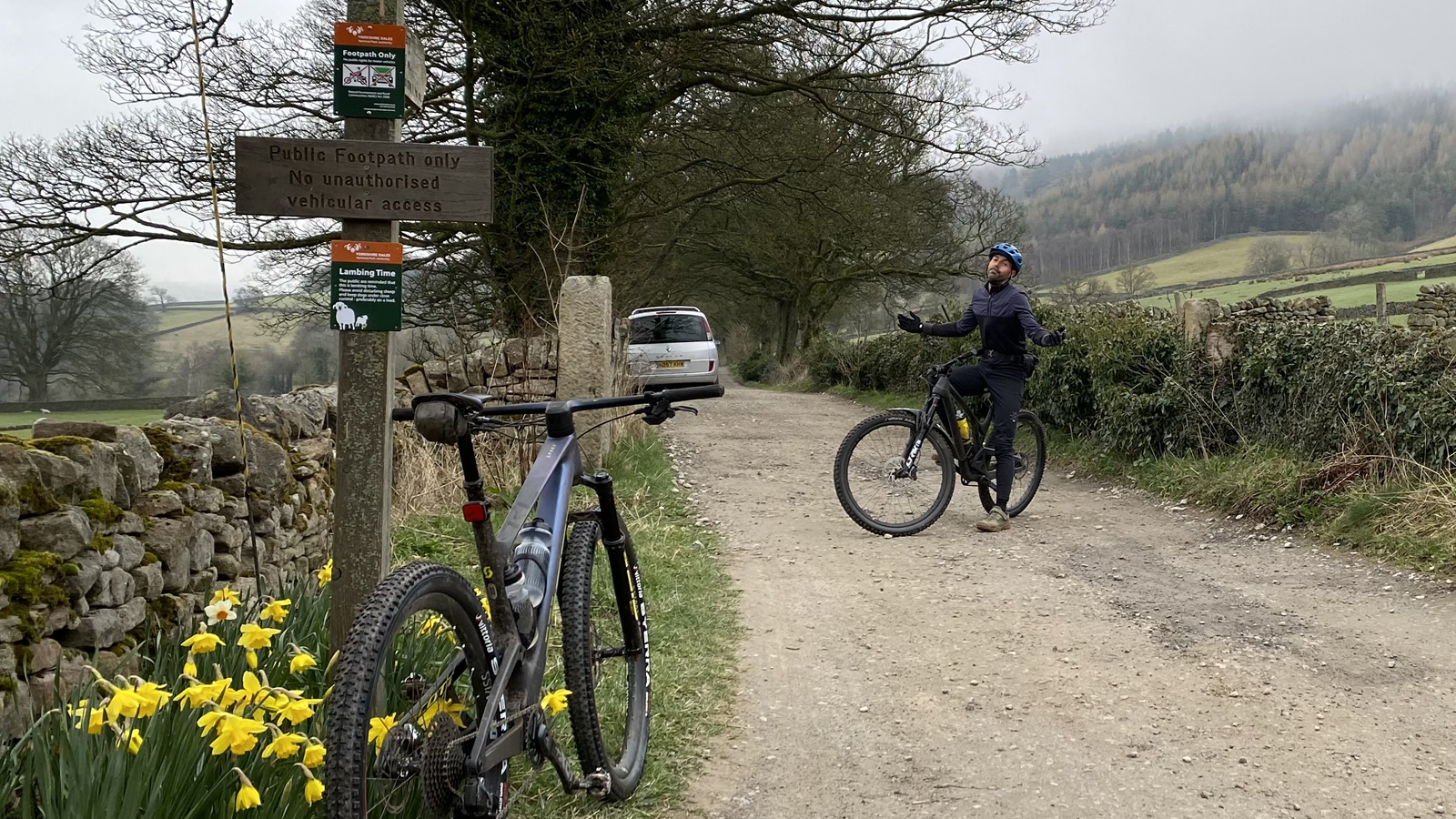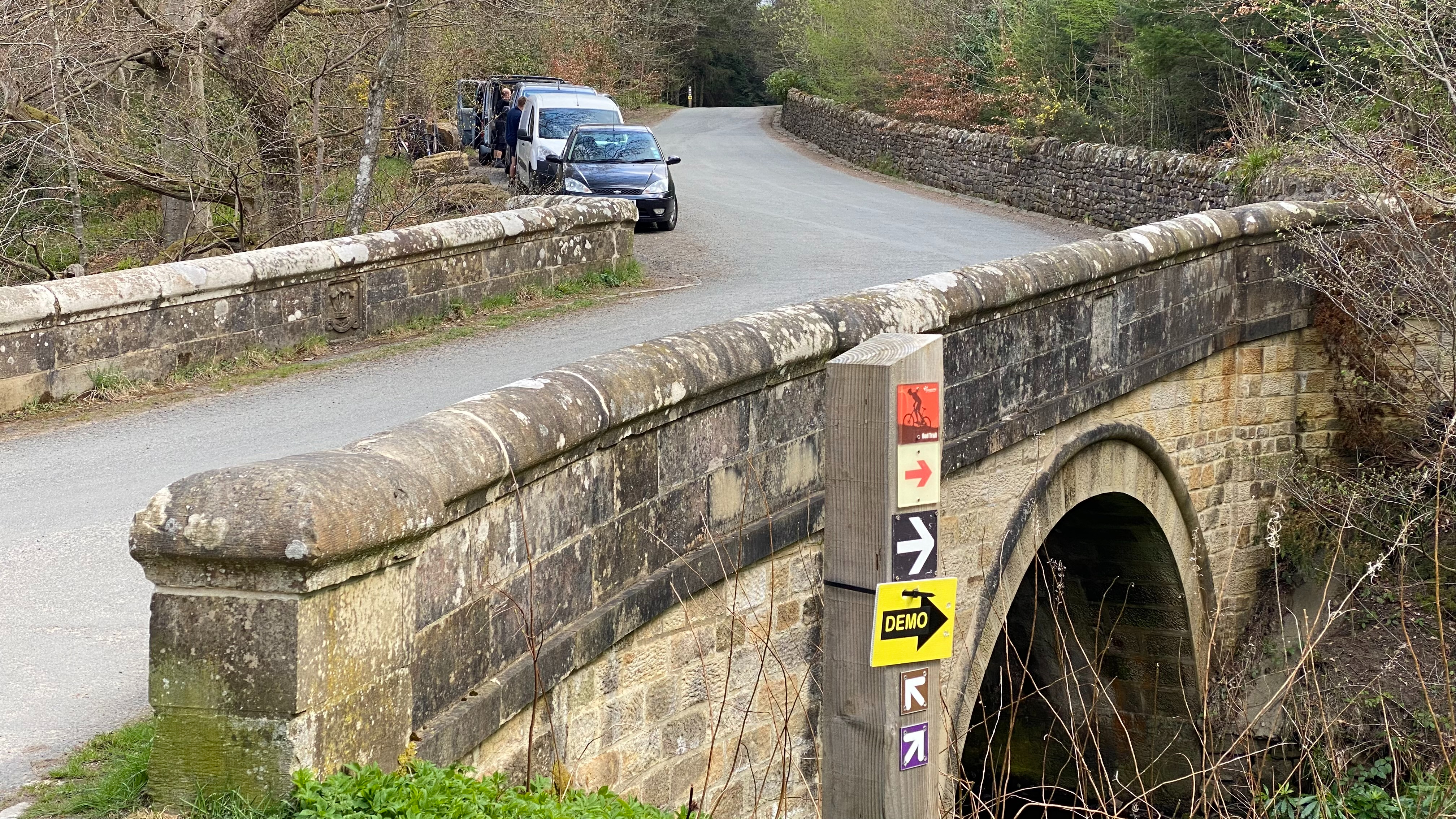Bespoken Word – why are cyclists locked out riding of publicly funded trails?
In the UK, certain large estates take large swathes of public money to keep trails open, but deny access to riders. How does this happen and is there anything we can we do about it?

To be totally honest, a day ago I thought I’d been terribly clever. I was ready to roll this feature out as a neat flip on our tendency to be both deeply self-righteous and also hypocritical about how we treat the lands we ride through.
Just as I was about to saddle up my high horse though, I had a third thought that really flipped things back around. Now I’m not sure what I think, or what the clever answer is after all.
Duking it out
Sorry, I’ve probably made zero sense so far so let’s follow my head for the past few weeks. Or to be precise my head thinking about access, tax, and what we should or shouldn’t do/expect in relation to who gets what money.
The first part is easy. I was asked by the advocacy arm of Cycling UK to produce a video and feature on the continuing access con going on local to me on the Bolton Abbey Estate in the Yorkshire Dales.
By way of background Cycling UK – they’re way more subversive and actively provocative than you might realize for a charity that used to be called the ‘Cyclists Touring Club’ – have been hounding the Duke of Devonshire for years about cycle access on his 30,000 acres of land. Land that the £880,000,000 estate trust gets ‘Conditional Exemption’ from paying Capital Gains Tax and Inheritance Tax on, in return for increasing public access. However, rather than increasing access, the estate has recently been reducing access for cyclists and disabled users. Most famously by physically blocking a bridge that’s been used for local riders for decades.

At one point they even employed nightclub-style bouncers to stop people from climbing over the barred gate. And where does this broad, totally sustainable surface, zero multi-user conflict bridge connect across the Wharfe too? The estates’ own Cavendish Pavillions tearoom that’s been a lynchpin in the local riding landscape since it opened in the 1890s. But while this storm in a teacup has calmed slightly (you can push across the bridge now presuming you can lift your bike over a large stone block) the estate continues to actively deny access to a potential 80-mile network of totally sustainable, beautifully scenic trails over the surrounding moorland. Trails that we, as taxpayers are effectively paying the estate for, not just in hundreds of millions of dodged tax payments but also in £330,000 of agricultural subsidies every year.
Which is why – yes, I’m finally getting to the point – is why Cycling UK wanted a video showcasing the limited legal routes in the area while showing just how much prime sustainable, responsible riding is still being denied to us. In an entirely helpful gesture towards the estate, they’ve even published a ‘fantasy route’ showcasing what sort of a ride you could do if they removed those ‘No Cycling’ signs. An initiative that would no doubt increase the number of visitors the estate got and how much tea and cake they would sell at the Cav Pav, not to mention the money that riders would put into the rest of the local economy via cafes, village shops, pubs, B&Bs, campsites, petrol stations, etc. And while the fact the video, feature, and accompanying story map went live on the anniversary of the Kinder Scout trespass was obviously entirely coincidental, the comments from over 10k viewers so far have certainly raised some interesting questions. Not just about whether these ‘No Cycling’ signs should be respected in Yorkshire, but also the Peak District (including more Duke of Devonshire land at Chatsworth), Dartmoor, Northumberland, South West, South East, Lake District, and pretty much any area in the UK and even in countries like the Netherlands. Or to put it another way, if we’re paying for these trails, surely we should be able to ride them?
Oh hang on, are we as bad?
And so I trooped off up to a Wheelbase demo day at Hamsterley (look out for first rides of the Ibis Ripmo AF, Trek Fuel EX8, Kona Process 134 CRDL, and Nukeproof Megawatt Elite on Bike Perfect soon) feeling all self-righteous about doing my bit towards righting the wrongs and pushing people to pay their dues. But as I drove down to the car park where the various demo routes headed off onto the extensive network of Forestry England maintained trails I noticed vans and cars squeezed onto any potential verges and gaps this side of the payment gate. In fact, I was even told by one of my mates at the demo that I should stop and park there so I didn’t have to pay.

And this is where my ‘oh aren’t I clever boy’ plot twist idea sprouted up from. If we’re not paying the car park fees that help fund the trail building work in our forests, then how can we expect to have more facilities created for us. And how can we get all antsy about landowners dodging their dues if we’re not prepared to pay ours? I even took artfully composed pictures of the parking fee dodgers with number plates carefully concealed by bike route signage in the foreground to prove the point. And before anyone cites the current soaring price of living as an excuse to not pay for parking, Kieran at Cycling UK put it beautifully when I was talking to him about the contradiction “All those new, long reach geometry, multi thousand pound carbon bikes they’re riding must be an absolute nightmare if their arms aren’t long enough to reach into their pockets for a few quid.”
Oh, how we laughed and how well I thought that set up a very interesting point of conversation about what we can and can’t expect based on our behavior and that of others.
Or should forests be free anyway?
And then today I had a real ‘needle sliding across the record’ moment. If we as [UK] taxpayers are already paying 20 percent (£25 million according to the March 2021 accounts – up from £16.5 million the previous year) towards the upkeep of ‘our’ forests in the form of various Forestry Commission grants and funding, why should we pay extra to ride in them?

So where next?
And that’s where I'm going to stop for now because I currently haven’t worked out what I actually think myself. Not least because there’s a huge amount more research I need to do on the economic realities, the official policies, and contradictory statements such as this gem from the Forestry England Recreation document for the Forest of Dean, “The Forest hosts a growing number of organized events each year. These events.. ..provide additional revenues for accommodation providers and other visitor businesses in the area.. ..but, on more and more days each year, our hub sites are at – or over – capacity. The capacity issues are most acute at Cannop Cycle Centre… ….and we are increasingly refusing permission for events for this reason.”
Or the fact that even back in 2005, Roger Wardle – the land agent for the Duke of Devonshire’s (yeah him again) – reconciled a £96,000 government grant for woodland (on top of all the other tax dodgers and subsidies) on the basis that “you don’t make money out of trees, not in this country. Nobody does.”
So how does that make you feel? Is it time to take up our trail tools and sharpened handlebars in recreational countryside use rebellion? Or burst the car park machines and tills with our increasingly sparse disposable income in the hope that we’ll be recognized as a far more lucrative and important crop than potential Ikea chipboard shavings. Is it time to remind the government that the bill to set up the National Parks 1949 described “the ability to leave our towns and walk on the moors and in the dales without fear of interruption are.. ..just as much a part of positive health and wellbeing as are the building of hospitals or insurance against sickness” and “the most exciting Act of the post-war Parliament”.
Let me know your access thoughts on Insta @guykestv and I’ll try and get some of your views into the next round of this discussion, alongside whatever I can scare up from land managers, Forestry folk, and maybe even a quote from the Queen. After all between 2005 - 2007 (I’ll find some more up to date and hopefully salacious figures by next time) her estate pocketed £195,000 towards the upkeep of the Royal forests of Windsor Great Park, but you’ll still have to pay £1 for every 20 minutes you park there.

Guy Kesteven has been working on Bike Perfect since its launch in 2019. He started writing and testing for bike mags in 1996. Since then he’s written several million words about several thousand test bikes and a ridiculous amount of riding gear. He’s also penned a handful of bike-related books and he reviews MTBs over on YouTube.
Current rides: Cervelo ZFS-5, Specialized Chisel, custom Nicolai enduro tandem, Landescape/Swallow custom gravel tandem
Height: 180cm
Weight: 69kg
